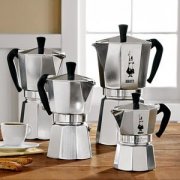Basic knowledge of coffee how to choose fresh coffee beans
There are three steps: smell, see, and peel.
Smell: put the coffee beans close to the nose and smell them deeply to see if you can clearly smell the aroma of the coffee beans. If so, the coffee beans are fresh enough. On the contrary, if the aroma is weak, or has begun to appear greasy, it means that the coffee beans are not fresh at all. No matter how much effort you put into grinding and cooking such coffee beans, it is impossible to make a good cup of coffee.
Look: spread the coffee beans on your hands, determine the origin and variety of coffee beans, and determine whether the coffee beans are roasted evenly.
Peel: take a coffee bean and try to peel it off by hand. if the coffee bean is fresh enough, it should be easy to pull away, and it will have a crisp sound and feeling. If the coffee beans are not fresh, you will find that you have to work hard to get rid of a bean.
Another important point to observe when peeling off the coffee beans is to see if the firepower is uniform when baking. If it is uniform, the outer skin and inner layer of the beans should be the same color.
If the color of the surface layer is obviously much darker than that of the inner layer, it means that there may be too much firepower during baking, which will also affect the aroma and flavor of coffee beans.
The difference in taste between large coffee beans and small coffee beans
For the same kind of coffee, the bigger the bean, the higher the grade, the smaller the bean, the lower the grade, and the cheaper it is. Of course, there are differences in taste. The bigger the beans, the stronger the coffee. However, in addition to high-grade products, the classification of other coffee is not very strict, for example, the central grade beans can account for 60%. Then beans one level higher than this level and beans at a lower level will each account for 20% at the same time. Therefore, sometimes it is roasted according to the standard of the marked central grade, and the other 40% of the coffee cannot be roasted under the best conditions.
The division of new beans and old beans in coffee beans and the time to market
The taste of new coffee and old coffee baked in the same variety and degree will be significantly different, of course, new beans are more fragrant. Although the moisture of the new bean will be greatly lost and the color will turn white after several years of preservation, the fragrance will not be greatly affected.
Important Notice :
前街咖啡 FrontStreet Coffee has moved to new addredd:
FrontStreet Coffee Address: 315,Donghua East Road,GuangZhou
Tel:020 38364473
- Prev

What are the terms of coffee?
We often see some coffee terms in coffee books and coffee training, so what do these terms stand for? Acidity [acidity] is the acidity and strong quality of all coffee grown on the plateau. The acidity referred to here is different from bitterness or sour (sour), and has nothing to do with pH, but a function that promotes coffee to boost the mind and clear the taste.
- Next

Coffee maker recommends Bilody Bialetti mocha pot
The earliest way to cook coffee is to directly boil the coffee powder with water on the stove and filter it to drink. Since the 19th century, some people have tried to use steam to brew coffee, hoping to make a strong cup of coffee in a very short time. At the beginning of the 20th century, the industrial revolution began to ferment around the world, and the Italians created a shape and momentum that resembled a steam train boiler and a general espresso coffee machine.
Related
- Beginners will see the "Coffee pull flower" guide!
- What is the difference between ice blog purified milk and ordinary milk coffee?
- Why is the Philippines the largest producer of crops in Liberia?
- For coffee extraction, should the fine powder be retained?
- How does extracted espresso fill pressed powder? How much strength does it take to press the powder?
- How to make jasmine cold extract coffee? Is the jasmine + latte good?
- Will this little toy really make the coffee taste better? How does Lily Drip affect coffee extraction?
- Will the action of slapping the filter cup also affect coffee extraction?
- What's the difference between powder-to-water ratio and powder-to-liquid ratio?
- What is the Ethiopian local species? What does it have to do with Heirloom native species?

